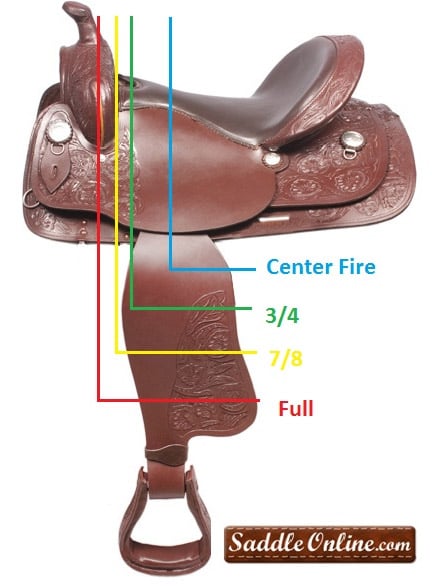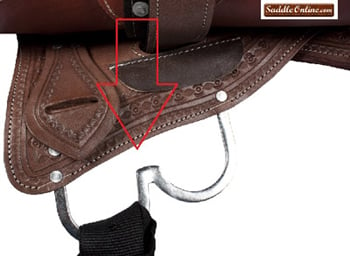Different Styles Of Western Saddle Rigging

Horse Saddle Rigging - Different Styles Of Western Saddle Rigging
When riding western style most people know about the latigo and cinch straps. They are essential to keeping the saddle in position on the horses back, and therefor keeping the rider secure as well. A lot of people have also heard about the different ways to “rig” their saddles, but which is best and what is it used for? Those are the questions we are trying to answer here. So first a little information.
First we will cover the placement and types of attachments. There are few current types of hardware for the rigging to attach to: “D”, Three-way, open three-way, and single ring. Single ring is the most common however the three-way and open three-way are gaining more popularity. Also with the hardware, is where it is attached. The conventional way is to have it attached to the tree of the saddle. There is also in-skirt and dropped or flat plate. Here are examples of each.
|
On Tree “D” ring
|
In Skirt Three-Way |
|
Dropped or Flat Plate Open Three-Way |
Single Ring Dropped or Flat Plate |
|
In Skirt Single Ring |
|
The on the tree rigging is the most conventional and popular style however it does have its advantages and disadvantages. The advantage is strength, attaching directly to the tree there is less of a risk of breaking, they are also easier to replace when breakage occurs. The disadvantage is bulk under the riders leg and fender. The on tree rigging can interfere with the free swing of the stirrups.
In-skirt rigging and flat or dropped rigging allows a for closer contact with the horse, less interference with the swing of the stirrup and the cinch does not need to be as tight. A disadvantage would be if the in-skirt rigging fails you have to replace the entire skirt of the saddle.
Positioning of the “D's”

There are four different placements for the hardware.
Full places the saddle over the horses center of gravity. It is mostly used with a back cinch for double rigging as in this position any pressure on the horn could pull the saddles cantle up. As well as when riding in any steep terrain.
7/8 position is approximately 1 inch back from full and allows for more room for the horses shoulder and elbow to move. This position is used for trail riding, barrel racing and reining.
3/4 position is approximately 1 ½ inches back from full. This allows for better distribution of the riders weight when in the saddle. This is used for high action turns, fast stops and quick movements when working livestock as well as for extreme terrain.
Center Fire places the cinch in the middle of the saddle and the horses body. A wider cinch is required to prevent saddle slippage. This is mainly used in endurance saddles. Military McClellan saddle and pony express riders used this style rigging.

Three-way and Three-way open rigging combines the different placements for rigging: Full, 7/8 and 3/ 4 in one piece of hardware. Full would be attached on to only the front ring. 7/8 ths would be attached to both the front and the back ring, resting almost in the middle of the hardware. The 3/ 4 would be attached to only the very back ring. The open three way is exactly the same as a regular three-way rigging just it was made to make it easier to make adjustments to change the rigging on the fly.





Comments : 0